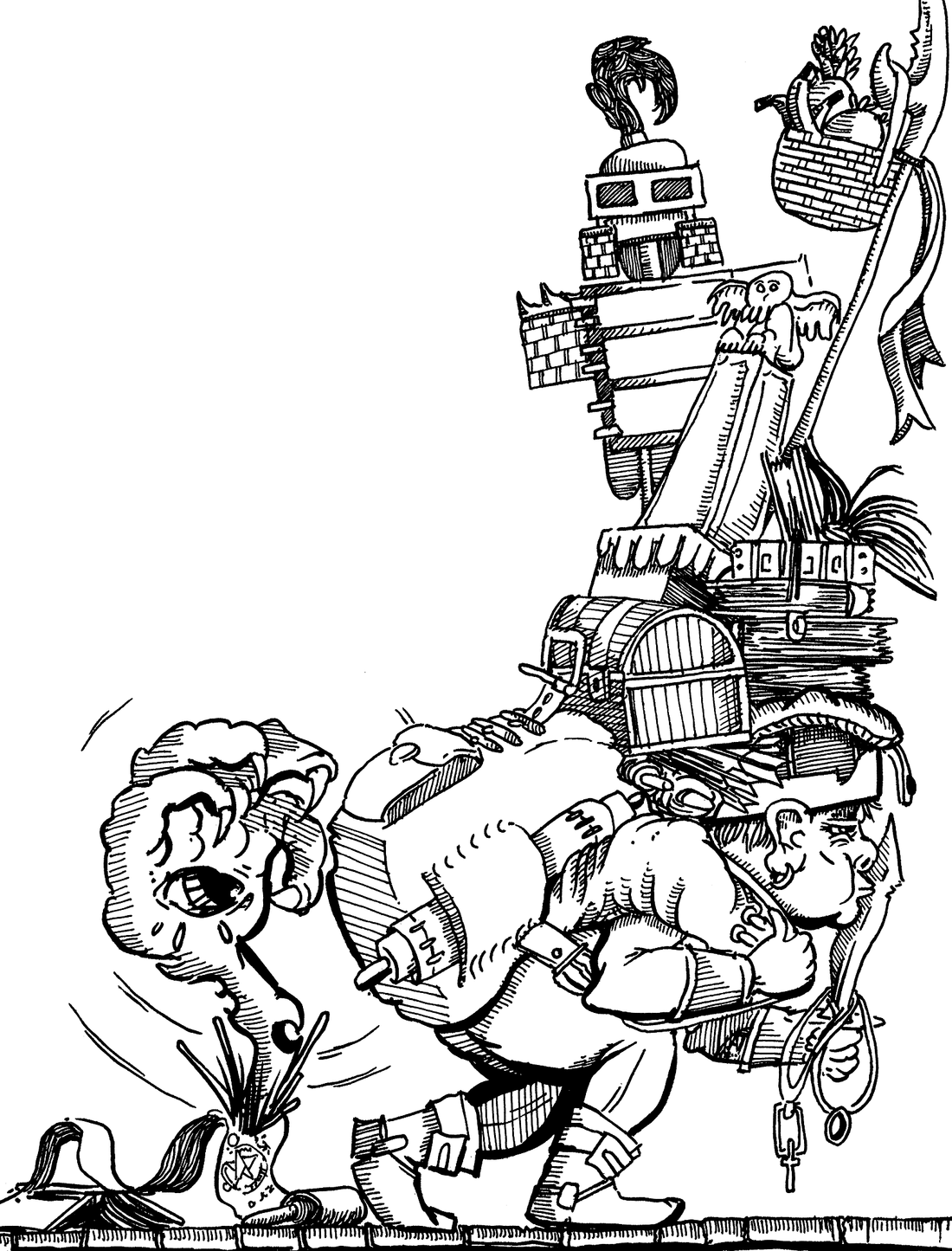
Item-Based Encumbrance Play Test
Share
UPDATE: These rules have now gone to print in Carcass Crawler issue 2 and we're no longer looking for further feedback.
Encumbrance is one of those parts of the game that different groups tend to handle in a lot different ways. Some groups simply ignore encumbrance altogether (it is, after all, an optional rule), some use one of the standard systems presented in Old-School Essentials, and others implement their own tweaks or alternative systems.
To provide more options to players of Old-School Essentials, we're developing an alternative encumbrance system which is now ready for play testing!
Standard Encumbrance Systems
Old-School Essentials presents two systems for tracking encumbrance:
- Basic encumbrance: A character's movement rate is determined by the armour they wear and whether they are carrying a significant amount of treasure or not.
- Detailed encumbrance: A character's movement rate is determined by the total weight of equipment and treasure carried.
These two systems are derived from the classic Basic/Expert rules, of course, as Old-School Essentials is designed for compatibility with that game.
Play Test: Item-Based Encumbrance
In recent years, item- (or slot-) based encumbrance has become one of the most popular alternative systems for tracking encumbrance: instead of tracking the weight of items carried, players track the number of significant items carried.
Necrotic Gnome is currently developing an item-based encumbrance system for Old-School Essentials (to be featured in Carcass Crawler issue 2) and would like to offer the draft version of the rules for play testing. You can download the draft files here:
Changes from v0.1 to v0.2:
- Unified wording around tiny items and jewellery.
- Clarified that a character's movement rate is determined by looking up equipped and packed items in the table and using the slower rate.
- Added a section on calculating item-based load limits for mounts and vehicles.
